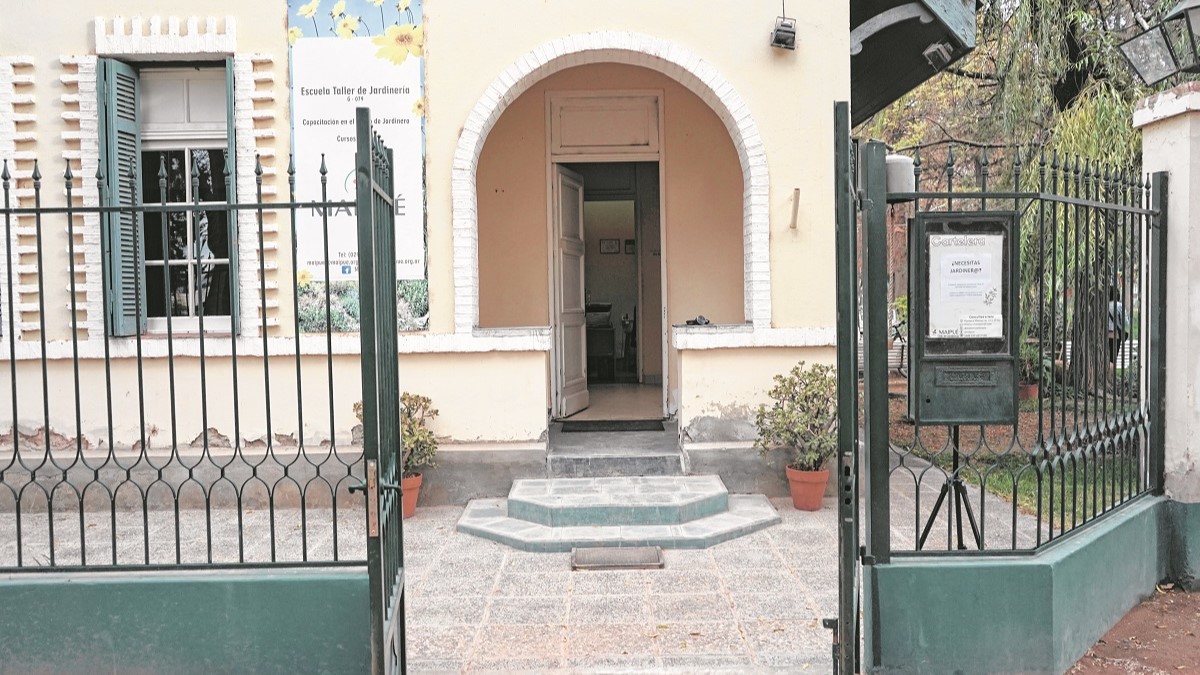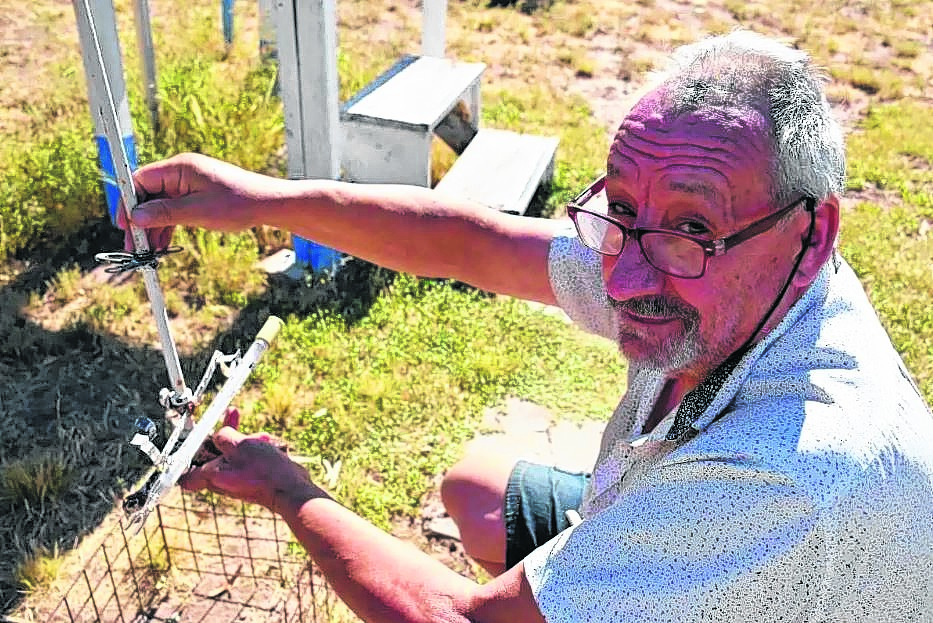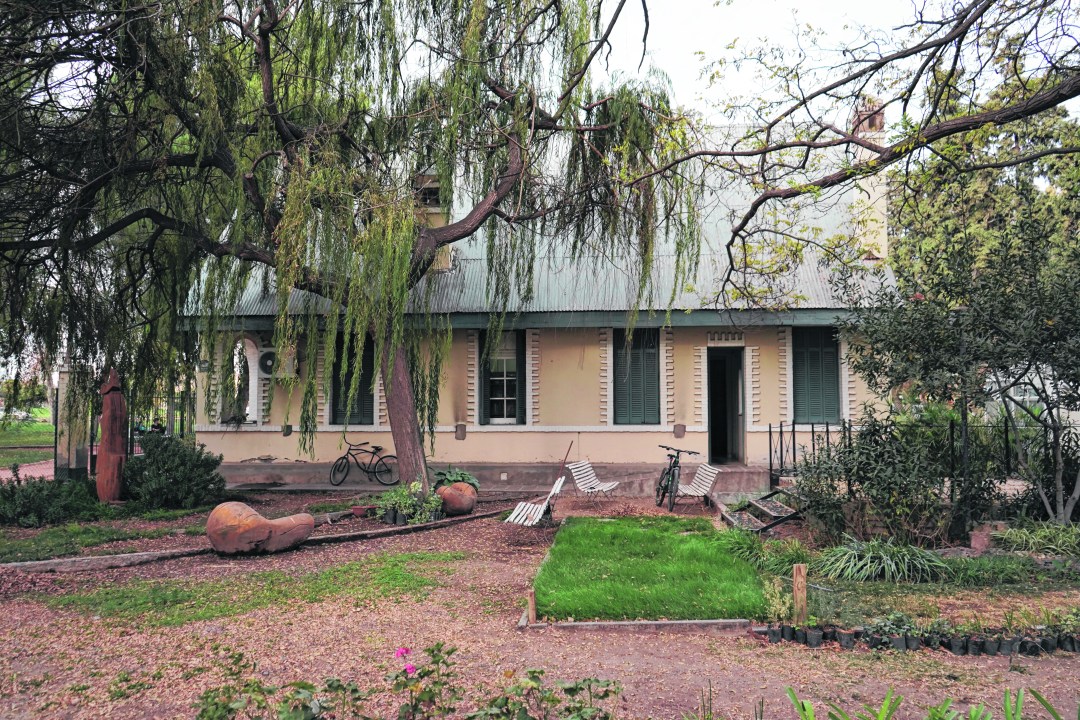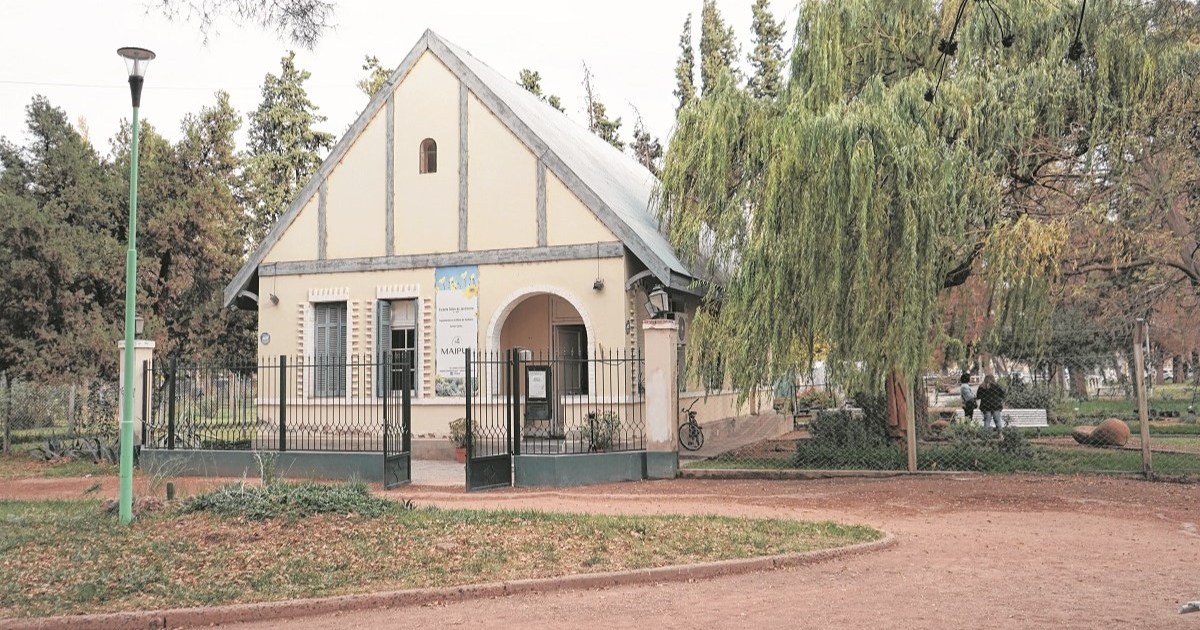It’s hard to imagine a An undivided valley, by levels or by municipal commons, that goes from north to south, along the river, with no other intervention than burning grasslands for clearing and the future passage of the train. Think about it as it was after the dispossession of the original communities.

“The lands of the valley are long, and at the same time narrow”, described Silvio Winderbaum in his book “To think and understand Río Negro”. In this limited terrain, for the bushes to give way to the poplars and fruit trees, the author explained, it was necessary to go through many previous steps. Among them, measure the weather conditions in the area. The control of the flows, the dam and the channels that were born from its floodgates, were essential, but they came later. And it is true, it is impossible to build without knowing where we are.
Colonia Lucinda or Parada Limay, today Cipolletti, was the starting point for these preliminary studies. The first meteorological station in Norpatagonia was installed there, which served to understand our basin and the type of climate that was felt. Over time it also marked the beginning of the fight against frost, the protection of fruit production, a pillar of our economy.
a hidden house
The beautiful house, behind the trees of the Rosauer Parkhoused these professionals from 1953 until the ’70s, although the activity had already started in 1902, next to the replica of Fortín Confluencia, in front of the roundabout, near the highway bridge.
Thanks to the archives, it is known that the space at the current intersection of Mengelle and Alem avenues occupied an area of four hectares, land ceded by the founder, General Fernández Oro, at the beginning of the 20th century, for these purposes. For several years it had the telephone number 35 and as a telegraphic address the name “Meteoro Cipolletti FCS”. Over time, Juan Erich Rosauer would buy them, “who had a strategic role in the development, from the provision of fruit plants to the producers. Today it is a green park with trees reminiscent of the Borghese Gallery in Rome”stood out on the site “Italians in Río Negro”.

From the documentation in the National Meteorological Service, dependent on the Argentine Air Force, the historian Héctor Pérez Morando rescued that the measurement center was installed on November 1, 1902, “about 1,500 meters from the FCS (Ferrocarril del Sud) and about 2,500 meters to the northeast of the Neuquén River”. “Topographically, it has fertile soil in the valley of the Negro river, it is irrigated by gravity with water from the Neuquén river, with a permanent flow”. described those records.
The river, always the river… the water. To achieve its domestication, due to the floods that contrasted with the lack of irrigation in other points, a reference was found in the hydraulic engineer César Cipolletti, born in Italy, of great prestige, and who had already worked in Mendoza, as described by the Historical Archive of Water in that province. He was the one who requested the daily measurement of the flows and the meteorological measurements, to understand the regional climate, since nothing existed in this regard. At the request of the professional it all started. In August of that same year, 1902, work began with “gauging stations” around the Limay, Neuquén and Negro rivers. In those years, Hydrology depended on the “Argentine Meteorological Office”, the original name of the SMN.

To talk about those first attempts, Pérez Morando referred to the work “Irrigation Studies – Ríos Negro and Colorado”, the work of Cipolletti, published in 1899. “It was about knowing the behavior of water courses and mirrors so that they could be used in irrigation projects”explained the researcher.
Thanks to the floods, including the most impressive that of 1899, hydrology and meteorology began to “walk together”, Morando commented. The presence of the academics and their instruments on the ground made things easier. The decree signed by the Nation considered “that the study of the regime of the Negro and Colorado rivers, whose results would be of indisputable utility, could be carried out without major expenses, based on the elements available to the Meteorological Office, since between the volume of water carried by said rivers and the meteorological conditions that prevail over the region that they bathe, there is such a close relationship that it would be very easy to carry out observations jointly by the same personnel”.
From compass to chicken coop
With that mission aheadthey increased the work in the hectares assigned to the new Station, where the emblematic house had four rooms, one for service, dependencies and the “field of observation”. As for the instruments, they had a barometer, weather vane, anemometer, rain gauge, compass and noon shadow. So far, what is referred to science. But as in other spaces of the time, the Allen Regional Hospital for example, the plans of the Meteorological Station also included a chicken coop, country house, sundial, garden, fruit trees, alfalfar, ditches, tamarisk, flag pole, poplars that surrounded it and even stubble, in order to be self-sufficient in the midst of such regional shortages.

Morando’s detail went into chronology: they were heads of the ‘Cipoleña Meteorology’ from 1902 – 1903, Iván Zanchinson, 1903 – 1904, Sten Björnenno; 1904, Robert Bruce; 1904-1905, Antonio Natoli; 1905 – 1913, José Medina; 1913, William Mackinlay; 1913 – 1917, Nile G. Aurelins; 1917 -1922, Carlos Stolanski; 1922 – 1931, Guillermo Kopelmann; 1931 -1933, José María Castro Videla; 1933-1941, Alfredo Witt; 1941 -1942, Jorge Zawels; 1942-1951, Luis A. Botta; 1951 – 1954, R. A. Ruggiero; 1954-1977, Homero Di Russo; 1977 – 1989, Felipe Chiofalo; 1989-1994, Miguel Palacios; 1994 – 1995, Hugo Dopico to the current one since 1995, Rodolfo Arnaldo Merlino from San Luis. And here appears the first womanA: “There were replacement employees for the bosses such as Eliza Venanzi de Botta, Humberto Navarro, José Tomás Gil Rojas and the agronomist José Proverbio”, he concluded.
From 1928 to 1937, the Cipolletti Station commanded the task of obtaining climatological statistics for Conesa, Gómez, Choele Choel, Godoy, San Antonio Oeste, Picún Leufú, Las Lajas and Chos Malal, to characterize northern Patagonia climatically. There, the data from 16 satellite sub-stations were also centralized, located along the Alto Valle from Villa Regina to the east to Plottier to the west, passing through Cinco Saltos and Centenario., to the north. It was the center of diffusion of forecasts and frost alerts.
astronomical field
Finally, on September 1, 1978, its transfer to the current headquarters was formalized, and to the third, at the corner of Yrigoyen and Kennedy, while the Parque mansion was left in the hands of Club Maipué, dedicated to training in gardening. Although the opening of the Neuquén Airport took away its functions, that did not prevent it from continuing to be active. Today it maintains the service with technology for monitoring phenomena and obtaining all the meteorological variables that are required. It is linked to an astronomical field for scientific dissemination, equipped with telescopes, which belongs to the Foundation for Amateur Astronomers of the Southern Hemisphere, sponsored by engineer Miguel San Martín from Río Negro, a member of NASA.
The current building also has its past, built in the ’40s. It belonged to “one of the oldest families in the city of Confluencia, descendants of Delfinothe first “mercachifle” (traveler merchant who moved in carts loaded with hides, skins and feathers)”, highlighted Merlino, the owner in charge. It was a general store and its property preserves old eucalyptus plantations, among which is one that has been declared historic.
To comment on this note you must have your digital access.
Subscribe to add your opinion!
Subscribe
